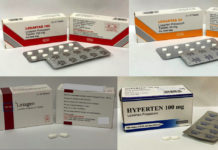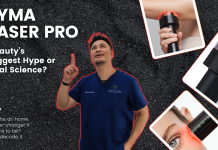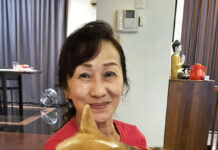
Misconceptions and bizarre tales
Quite a few think they are a cure-all, while others tell stories of someone who was sidelined for weeks to nurse scarring from a laser blast. And the most bizarre of them – there are those who envision treatment lasers akin to those seen in Star Trek: photon guns, light beams and all!
What is a Laser?
The truth is, lasers are not at all that magical. They are, simply, machines which emit – Light!
The difference is that unlike conventional light sources, lasers emit intensely bright light of a fixed wavelength, which is in phase. (Think of a scenario where 3 children are on swings in a playground. If all of them are moving in tandem, they are in phase. If they way they move bears no relation to each other, they are out of phase).
By using different materials, the wavelength of the light emitted can be controlled. You have heard terms like Ruby Laser, Nd:Yag Laser, etc. These refer to the laser medium which is housed in the laser machine. They are the ones which determine the wavelength of the emitted light.
Now why is the wavelength important?
Different lasers target different skin components

Our skin has different components and each of these components absorb light in different ways with different wave lengths. By using different lasers and the appropriate settings, different structures in the skin can be targeted and selectively destroyed. One can target the melanin (pigmented component), the haemoglobin (in blood vessels), the hair follicles, or the water in the skin with different lasers.
With this simple yet important principle, lasers have become an important tool in cosmetic dermatology. Pigment Lasers target pigment in the skin to break down the melanin and lighten pigmentation. Similarly, vein removal lasers target the hemoglobin in the blood, to cause the veins to coagulate and be removed from the skin. Rejuvenation lasers target the water and collagen in the mid layer of the skin – the dermis – to induce new collagen formation.
It is important to remember, however, that lasers are not a cure all. Many a time, alternative treatment methods may actually be superior to lasers. You should consult your doctor for more information.
Common cosmetic uses for lasers today include:
* Treatment of small blood vessels on the surface, such as spider veins
* Treatment of birthmarks associated with abnormal blood vessel formation (e.g. port wine stains)
* Treatment of pigmentation
* Treatment of acne
* Removal of tattoos
* Hair reduction
* Skin resurfacing for wrinkles, scars, and rejuvenation
Post treatment downtime
The downtime associated with each laser is also different. This can range from none (just mild redness of skin) with non- ablative laser resurfacing, to 4 weeks with ablative laser resurfacing. Scabbing and pinpoint bleeding of the skin sometimes occurs with some laser treatments, and these usually resolve very soon after (less than a week). Newer fractional lasers, commonly used for treating acne scars, are in between – the downtime usually ranges from 1 to 2 weeks.


















